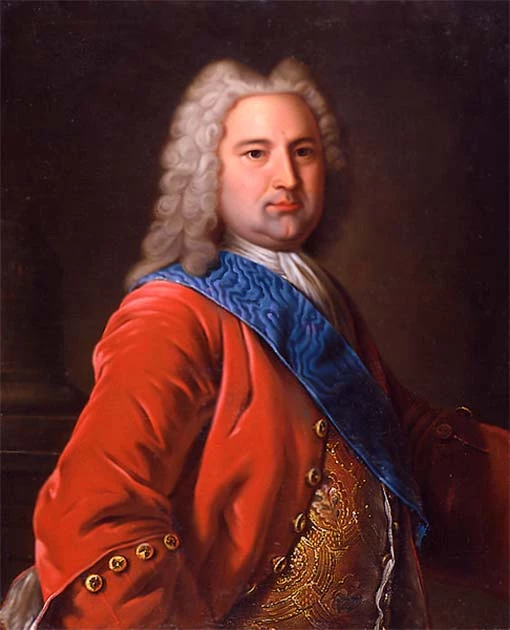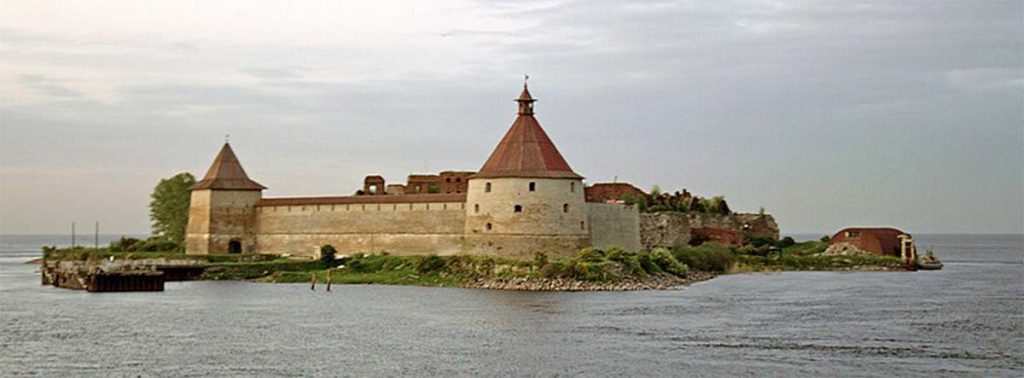The 18th century in Russia is known as “the era of palace coups,” and it started with Peter the Great coming into power at the end of the 17th century. Peter the Great came to rule following a brutal series of coups, which ended with Peter and his brother Ivan V co-ruling until Ivan died in 1696.
One of the most tragic coups involved baby Ivan VI, who spent 20 years locked away in solitude, going mad so his cousin could be the Empress and he couldn’t claim his title. Why was a baby sent to prison?
Ivan VI
Ivan VI Antonovich, also known as Ioann Antonovich, was the youngest emperor of Russia. The infant emperor Ivan VI was “in power” from October 1740 until December 1741, when he was overthrown by his cousin Elizabeth Petrovna, the daughter of Peter the Great. The infant and his parents were imprisoned far away from Saint Petersburg (the capital of Russia at that time).
In order to understand what led to a two-month-old child becoming the Emperor of Russia and why he was exiled and overthrown, it is essential to understand what was happening with rulers at the time. Peter’s eldest son, the heir Alexi, had no desire to be emperor and literally ran away from home to prevent it.
He was found but severely beaten, which rendered him incapable of ruling. Peter the Great had to change how succession would work, and it was required for all monarchs to name a successor in their will.
With Alexi unable to rule, Peter the Great named his grandson Peter II emperor. When Peter II died, he never chose his successor, which triggered an intense court battle similar to what occurred after Ivan the Terrible died.
One political faction led by Prince Dmitry Golitsyn decided the best option was that the next leader of Russia should be the living descendants of Peter the Great’s brother, Ivan V. Peter the Great had a daughter, Elizabeth, who was fully capable of being the Empress.

Still, she was exiled, and her cousin Anne became empress in 1730. Empress Anne hated all her cousins and felt that Uncle Peter the Great wasn’t so great, stealing power from her father.
But the plot thickens: when Anne became Empress, she discovered she could not conceive the next heir. She decided she would create an heir from her niece, Anna Leopoldovna. Anne arranged a marriage for Anna Leopoldovna to Duke Anthony of Ulrich of Brunswick in 1739. Ivan VI was born the following year, one month before Empress Anne died.
An Infant Emperor
Ivan VI was too young to rule; he couldn’t even speak or was able to hold his head up. This meant his parents were to serve as regents until Ivan VI was old enough to rule the country.
- Man in the Iron Mask Remains a Mystery
- The Strange Case of Tsar Alexander I: Did he Fake his Own Death?
However, before her death, Anne had other plans and assigned the regent title to her long-time lover, Ernst Johann von Biron. Ernst was given this role that should have gone to Ivan VI’s father so that Ernst would maintain power and wealth when Anne passed.
Biron was not well-liked, and both Ivan’s parents and the court felt that Biron had no right to be regent, ruling until Ivan VI was old enough to assume the throne. In a period of three weeks, Ivan Vi’s father had developed a plan to oust Biron.

On November 19, 1740, Biron was snatched from his room and was immediately banished to Siberia. After Biron was out of the picture, Ivan’s mother, Anna Leopoldovna, was named regent and became a successful ruler.
Ivan VI and his mother were officially rulers of Russia for a grand total of 13 months. On December 6, 1741, a coup d’etat occurred, and Elizabeth of Russia took the throne and sentenced the baby Ivan VI and his parents to life in prison.
Ivan and his parents were moved out of Saint Petersburg in the dead of night, and for two years, they lived in a cell in Daugavgrīva fortress in Latvia. After a political scandal, Elizabeth sent Ivan VI to Kholmogory in the Arkhangelsk Oblast, where the boy was kept alone in a cell.
The only person Ivan VI saw for twelve years in Kholmogory was his jailer. Then the news got out that Ivan VI was being held in prison and he was transferred secretly to the Shlisselburg Fortress on the outskirts of Saint Petersburg.
Shlisselburg was a maximum security prison, and the boy was guarded even more than before. The head of the fortress did not know the true identity of the young man who was kept at his fortress.
While ruling Russia, Elizabeth instated a damnatio memoriae, Latin for “condemnation of memory,” on Ivan VI. Nobody was ever to say his name, and all currency with Ivan VI’s face was destroyed: the boy was literally to be forgotten.
An ode to the baby emperor written by the founder of the historic Moscow State University was destroyed, and documents and publications that mentioned Ivan’s name and title were confiscated and destroyed. Some of these documents remain, but they are incredibly rare.
When Elizabeth passed, and Peter III (Catherine the Great’s husband, whom she later deposed) became the new emperor, things seemed to improve for Ivan VI. Peter III visited the youth in his cell and was sympathetic to the rightful heir to the throne who had spent all his life locked away in secret.
When Peter III was deposed a few months after he visited Ivan VI, new orders came from Saint Petersburg, which commanded Ivan to be kept in shackles. The guard was told to beat him should Ivan “become unmanageable.”
A Sad End to a Short Life
Orders from Catherine the Great were given that stated should anyone from outside try to set Ivan free; the guards were to kill their prisoner. After twenty years in solitary confinement, Ivan VI suffered the mental effects of his isolation and was considered insane. But not totally insane.

Isolation has been found to impact the brain and a person’s mental and emotional health. Even though Ivan was mentally ill; he was aware of his royal blood. Ivan was not permitted to receive any educational training, but he did learn the alphabet so he could read his bible.
Ivan VI’s life came to an end on July 5, 1764. A member of the army learned that the boy kept in the fortress was Ivan VI, the rightful Emperor of Russia.
He gathered some people together, arrested the commandant, and demanded the release of Ivan VI. The jailers had received strict orders to kill Ivan should anyone try to free him, and that is what they did. Ivan VI had no idea that people were there trying to free him.
Ivan was buried somewhere in Shlisselburg, and his remains have not been found to this day.
The Boy in the Iron Mask
Ivan VI’s short and tragic life is often compared to the “Man in the Iron Mask ” from Alexandre Dumas’s 1850 novel Le Vicomte de Bragelonne. In the story, a mysterious prisoner’s face is completely covered with an iron helmet, masking his identity.
The legend of a real Man in the Iron Mask inspired Dumas. According to records, an unnamed prisoner had been arrested and was being kept secretly locked away in France. Why the man was arrested, his name, or his crimes were never mentioned by anyone, and he eventually ended up in the Bastille.

The Man in the Iron Mask was guarded by two musketeers who were ordered to kill the man if he ever took his mask off, said his name, tried to seek help, and the only things that the man was permitted to say were things like food, water, doctor, etc. When the man died in prison, the cell was scrubbed clean, and he was never spoken of again.
Many historians, including Voltaire, believe that the identity of the Man in the Iron Mask was the illegitimate brother of Louis XIV. By locking the man away and hiding his identity, it meant he could not depose the leader of France.
The real Man in the Iron Mask died in 1703 and still remains unidentified. There are many similarities between the Man in the Iron Mask and Ivan VI, including guards who were ordered to kill their prisoners if they tried to reveal themselves or seek help.
Top Image: Ivan VI was a victim of his birth and inheritance for his entire life. Source: Unknown Author / Public Domain.